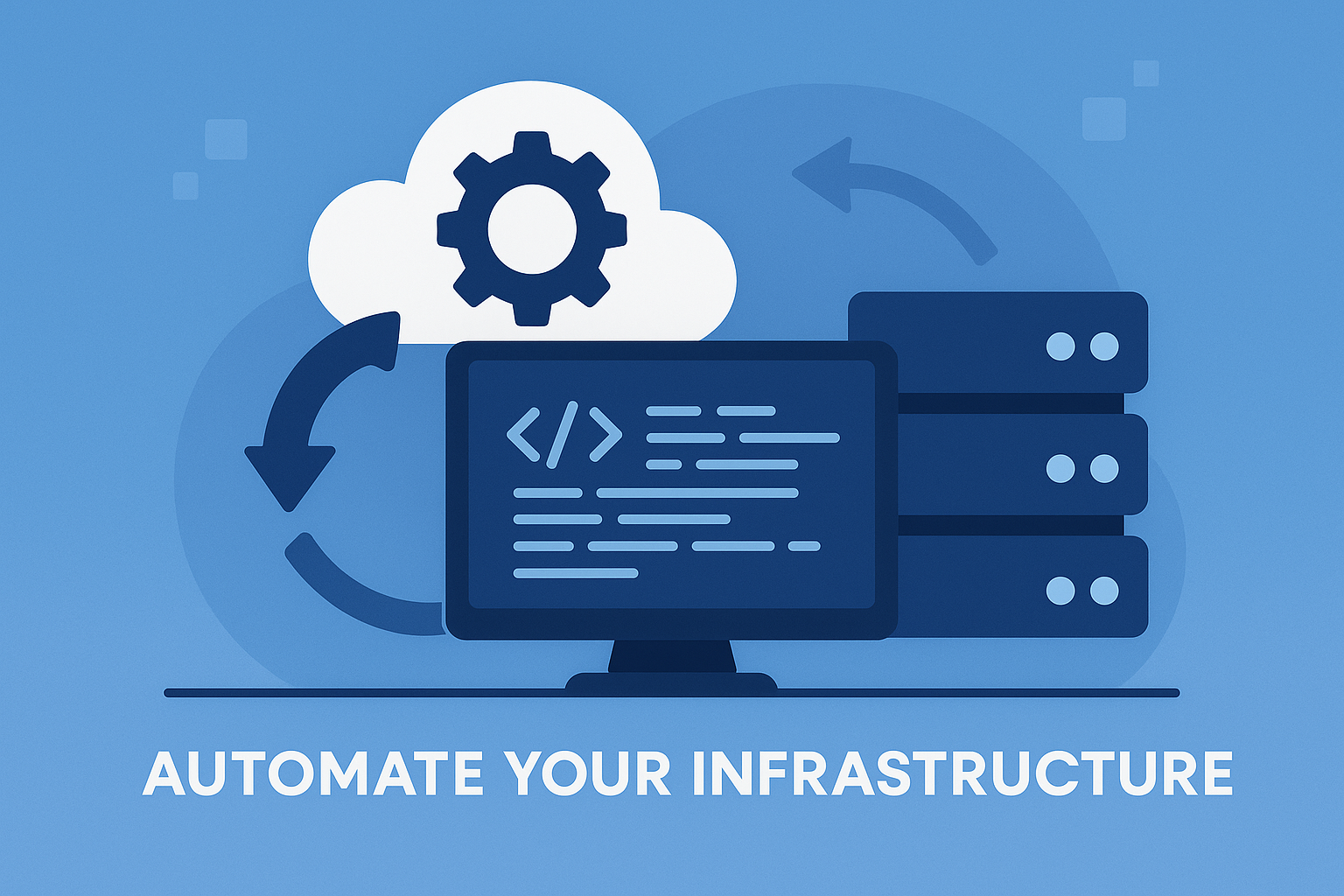DevOps is a set of practices, tools, and cultural philosophies that integrates and automates the work of software development (Dev) and IT operations (Ops) teams. The goal of DevOps is to shorten the software development lifecycle, improve collaboration between teams, and deliver high-quality software faster and more reliably. It emphasizes automation, continuous integration, continuous delivery (CI/CD), and frequent collaboration to ensure that software is built, tested, and deployed efficiently.
Key Principles of DevOps:
Collaboration and Communication:
- DevOps aims to break down the silos between development, operations, and other teams involved in software delivery (e.g., quality assurance, security). By fostering collaboration, teams can align around shared goals and work together to improve the software delivery process.
Automation:
- Automation is a core component of DevOps. DevOps seeks to automate repetitive tasks such as testing, building, and deploying code, as well as managing infrastructure. This reduces human error, speeds up processes, and ensures consistency across environments.
Continuous Integration (CI):
- Continuous Integration involves frequently merging code changes into a shared repository, where they are automatically built and tested. This ensures that code is always in a working state and prevents integration problems later in the development cycle.
Continuous Delivery (CD):
- Continuous Delivery extends CI by automatically deploying code to a staging or production environment once it passes testing. This allows for frequent, reliable releases with minimal manual intervention. In some cases, Continuous Deployment takes it further by automatically deploying code changes to production without human approval.
Infrastructure as Code (IaC):
- DevOps encourages managing infrastructure using code, known as Infrastructure as Code (IaC). With tools like Terraform, Ansible, or CloudFormation, infrastructure configurations are treated as code, allowing them to be version-controlled, automated, and easily replicated across environments.
Monitoring and Observability:
- Continuous monitoring and observability are essential in DevOps to ensure that applications and infrastructure are performing as expected. Monitoring tools collect data on system performance, availability, and errors, helping teams respond to issues in real-time and improve the stability of the system.
Agility and Continuous Improvement:
- DevOps promotes a mindset of continuous improvement, where teams frequently reflect on their processes and workflows to identify areas for optimization. This agile approach allows organizations to respond quickly to changing business needs or customer feedback.
Key Practices of DevOps:
Version Control:
- Version control systems, such as Git, are essential in DevOps for tracking changes to code, infrastructure, and configurations. Teams can collaborate effectively on projects, review code, and revert to previous versions if needed.
Automated Testing:
- Automated testing ensures that code changes are validated as soon as they are made. Unit tests, integration tests, and end-to-end tests are all automated and run during the CI/CD pipeline to catch bugs early and improve software quality.
Configuration Management:
- Configuration management tools (e.g., Chef, Puppet, Ansible) automate the process of configuring and maintaining systems, ensuring that servers, applications, and infrastructure are consistently configured across environments.
Continuous Deployment/Release:
- In addition to Continuous Integration and Continuous Delivery, some teams adopt Continuous Deployment, where code changes are automatically deployed to production once they pass the necessary tests. This allows for frequent, small releases and faster time-to-market.
Containerization:
- Containers (e.g., Docker) package applications and their dependencies in lightweight, portable units, allowing them to run consistently across different environments. Containers improve the scalability and portability of applications, making them a key part of modern DevOps workflows.
Orchestration:
- Tools like Kubernetes and Docker Swarm orchestrate and manage containers across multiple hosts, ensuring that applications are deployed and scaled automatically. Orchestration helps with load balancing, failover, and optimizing resource usage.
Benefits of DevOps:
Faster Time to Market:
- DevOps enables organizations to release software faster by automating the build, test, and deployment processes. Frequent, smaller releases reduce the time it takes to bring new features and updates to customers.
Improved Collaboration and Efficiency:
- By breaking down the barriers between development, operations, and other teams, DevOps improves communication and collaboration, reducing bottlenecks and streamlining workflows.
Higher Quality Software:
- With automated testing, continuous integration, and frequent feedback, DevOps ensures that code is regularly tested and verified, resulting in higher quality software and fewer defects in production.
Increased Stability and Reliability:
- Continuous monitoring, Infrastructure as Code, and automated deployments reduce the risk of errors and downtime in production, improving the reliability and availability of applications.
Better Scalability and Flexibility:
- DevOps practices, such as containerization and orchestration, enable applications to scale efficiently in response to changing demand. Teams can also quickly adapt to new requirements or changes in the environment.
Reduced Risk:
- By deploying smaller, incremental updates more frequently, DevOps reduces the risk associated with large, infrequent releases. Issues are caught and resolved early, before they escalate into larger problems.
DevOps Tools and Technologies:
- CI/CD Tools:
- Jenkins, GitLab CI, CircleCI, Travis CI: Automate the build, testing, and deployment of applications.
- Version Control:
- Git, GitHub, Bitbucket: Manage code changes, collaborate on projects, and track version history.
- Configuration Management:
- Ansible, Puppet, Chef: Automate the setup and management of infrastructure, ensuring consistent environments.
- Containerization:
- Docker: Packages applications in lightweight containers, making them portable and scalable across environments.
- Orchestration:
- Kubernetes, Docker Swarm: Manage, deploy, and scale containers across clusters of machines.
- Monitoring and Logging:
- Prometheus, Grafana, ELK Stack (Elasticsearch, Logstash, Kibana), Datadog, New Relic: Provide real-time monitoring, alerting, and visualization of system performance and logs.
- Infrastructure as Code (IaC):
- Terraform, AWS CloudFormation, Pulumi: Manage infrastructure using code to automate provisioning and configuration.
- Collaboration and ChatOps:
- Slack, Microsoft Teams, Mattermost: Facilitate team communication, often integrated with automation tools to support ChatOps (operating systems and workflows via chat platforms).
DevOps Culture:
DevOps is not just about tools and processes but also about creating a collaborative culture within an organization. Key aspects of a DevOps culture include:
Shared Responsibility:
- Development, operations, QA, and other teams share the responsibility for delivering reliable, high-quality software. Everyone is involved in the entire software delivery lifecycle, from development to deployment to maintenance.
Continuous Feedback:
- Feedback loops are crucial in DevOps, with teams gathering feedback from customers, internal stakeholders, and automated monitoring systems. This allows teams to continuously improve both the product and the processes.
Fail Fast, Recover Quickly:
- DevOps encourages experimentation and innovation, accepting that failures will happen. The key is to detect issues early, learn from them, and recover quickly through rapid deployments and rollbacks.
Focus on Automation:
- Automation is at the heart of DevOps. From testing to infrastructure provisioning to deployments, automation reduces manual intervention, minimizes human error, and speeds up the delivery pipeline.
DevOps vs. Traditional Development:
| Aspect | DevOps | Traditional Development |
|---|---|---|
| Team Structure | Collaborative, cross-functional teams | Separate development, operations, and QA teams |
| Deployment Frequency | Frequent, smaller releases (daily/weekly) | Infrequent, larger releases (monthly/quarterly) |
| Automation | Heavy focus on automation (CI/CD, testing, IaC) | Limited automation, more manual processes |
| Collaboration | Development and operations work together closely | Silos between development, QA, and operations |
| Feedback Loops | Continuous feedback from automated tools and users | Feedback mainly after large releases |
| Risk Management | Small, incremental changes reduce risk | Larger, less frequent releases increase risk |
Conclusion:
DevOps is a transformative approach to software development that emphasizes collaboration, automation, and continuous improvement. By breaking down the traditional barriers between development and operations teams, DevOps enables faster, more reliable software delivery with fewer risks. With its focus on automation, continuous integration, and monitoring, DevOps allows organizations to be more agile, responsive to customer needs, and capable of scaling their infrastructure and applications effectively.



